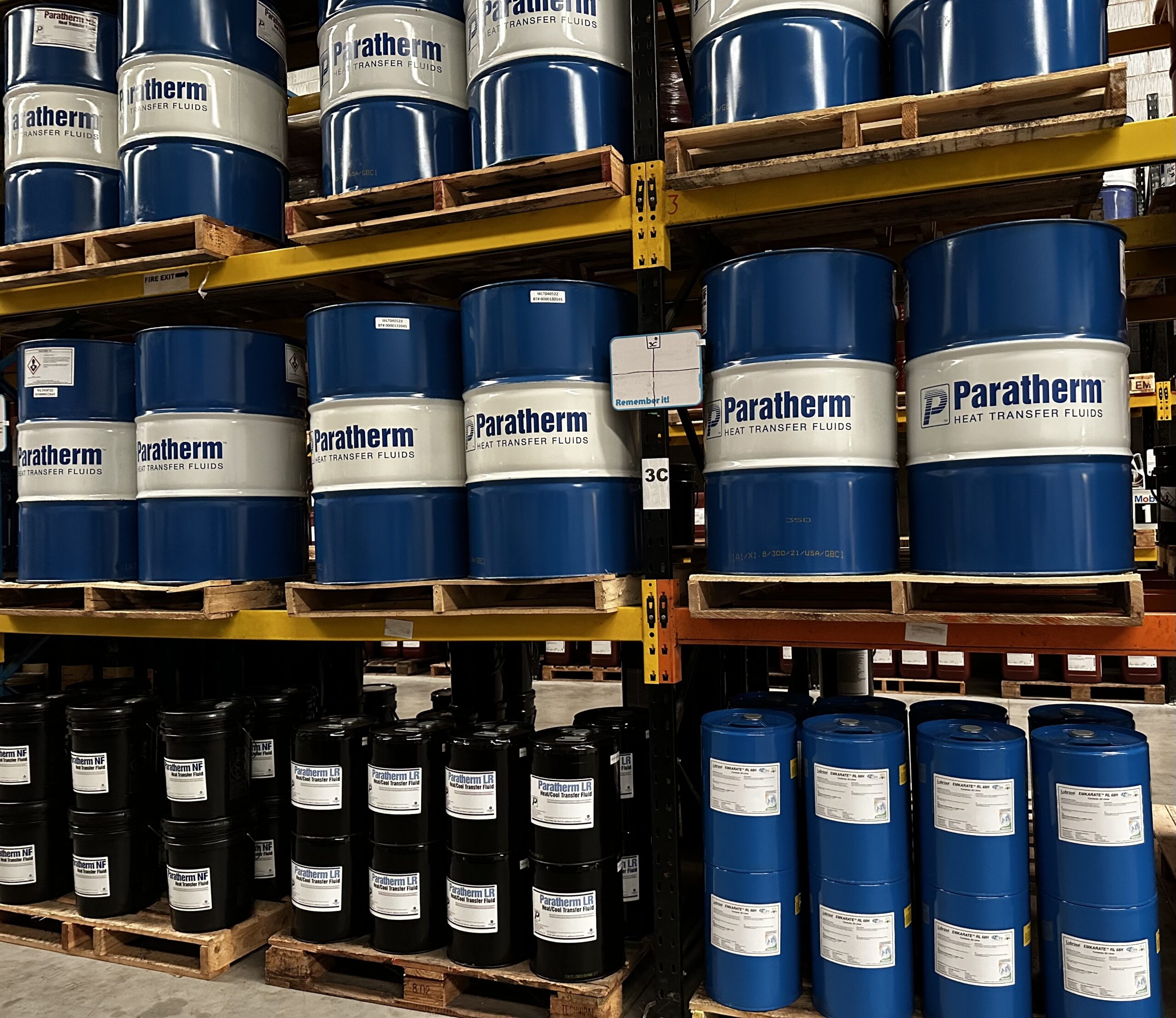Heat Transfer Fluid: Important for Enhancing Industrial Cooling And Heating Equipments
Heat Transfer Fluid: Important for Enhancing Industrial Cooling And Heating Equipments
Blog Article
Recognizing the Uses of Warmth Transfer Liquid in Industrial Applications
In the dynamic landscape of industrial applications, warmth transfer liquids (HTFs) are crucial for preserving accurate thermal guideline, critical to enhancing functional efficiency and product top quality. From the ins and outs of chemical processing to the robust demands of power generation, HTFs are main to ensuring secure and reliable warmth exchange. With their important role covering varied fields, consisting of the food and drink industry, recognizing their diverse applications is vital. Nevertheless, what ingenious improvements in HTF modern technology are on the perspective, and just how might they redefine sector requirements? This exploration assures insights into these compelling concerns.
Role in Chemical Handling
In chemical processing, warm transfer liquids play a vital function in keeping specific temperature control, which is essential for enhancing reaction prices and making sure item quality - heat transfer fluid. These liquids are crucial in promoting efficient warm exchange between procedure tools, thus allowing the regulation of thermal problems within activators, distillation columns, and other essential device. Their capability to keep stability under varying thermal loads and ecological conditions makes them vital in chemical manufacturing
The option of an appropriate warmth transfer liquid is determined by elements such as thermal conductivity, details warmth capability, viscosity, and chemical compatibility with the procedure materials. High-performance fluids permit for fast heating & cooling, improving the effectiveness of endothermic and exothermic responses. Additionally, their thermal security decreases the risk of degradation or contamination, which can cause tools fouling and reduced procedure efficiency.
In addition to temperature level policy, these fluids add to safety and security by avoiding overheating and reducing the possibility for thermal runaway reactions. By offering consistent thermal management, heat transfer fluids enhance process reliability and can bring about considerable power savings. As chemical processes end up being significantly complicated, the importance of selecting and keeping optimum heat transfer liquids can not be overstated.

Power Generation Applications
Moving from chemical processing to power generation, heat transfer fluids presume an important function in the production of power. In power generation applications, these liquids are important in preserving optimum thermal performance and guaranteeing the trusted operation of nuclear power plant. Various sorts of power generation centers, including fossil fuel-based plants and concentrated solar power (CSP) systems, rely greatly on warm transfer fluids for effective energy conversion.
In nonrenewable fuel source nuclear power plant, heat transfer fluids are utilized to move warm from burning gases to water in central heating boilers, generating steam that drives wind turbines. This procedure needs fluids with high thermal stability and superb warm transfer homes to endure extreme temperatures and pressures. In CSP plants, heat transfer fluids distribute through solar collectors, taking in solar energy and moving it to a central receiver where it is utilized to produce vapor. The vapor then powers wind turbines to generate power.
The choice of heat transfer fluid in these applications is vital, as it impacts the plant's efficiency, safety and security, and ecological footprint. Synthetic oils, liquified salts, and other specialized fluids are frequently made use of, selected based on their thermal security, these details heat capacity, and compatibility with system materials.
Effect On Food and Drink Market

In enhancement to enhancing product quality, heat transfer fluids add to functional efficiency by minimizing energy usage and decreasing process times. Their thermal stability and high warm ability permit quick heating and cooling cycles, leading to improved throughput and cost-effectiveness. In addition, using food-grade heat transfer liquids, which adhere to strict security requirements, makes sure that there is no danger of contamination, thereby guarding public wellness.
The versatility of heat transfer liquids enables their application across a wide variety of food and drink procedures, from dairy products and confectionery to brewing and bottling. By optimizing temperature level control, these fluids play a vital function in satisfying the progressing demands of the food and drink sector while maintaining high requirements of top quality and safety and security.
Significance in Manufacturing

A crucial aspect of making procedures across numerous markets is the effective management of temperature level, which is where heat transfer fluids demonstrate their relevance. These liquids play an essential function in keeping optimal temperatures for diverse operations, making certain product quality, safety, and energy effectiveness. In markets such as chemical handling, pharmaceuticals, and plastics, accurate temperature level control is important for responses, treating, and molding procedures. Warm transfer liquids assist in these controlled settings by soaking up, transferring, and launching heat as essential.
In making settings, warm transfer fluids contribute considerably to operational performance and cost-effectiveness. By decreasing temperature changes, they help in reducing power usage, thus lowering functional costs and boosting sustainability. They improve the life-span of tools by avoiding getting too hot and read this thermal stress, which can lead to expensive downtime and repairs.
Furthermore, the adaptability of warmth transfer liquids permits them to be customized for details applications, fitting a vast array of temperatures and environmental conditions. This versatility makes sure consistent performance, even in the most requiring industrial setups. Ultimately, the tactical use heat transfer liquids empowers producers to optimize their processes, improve item high quality, and keep an one-upmanship in an ever-evolving market.
Advancements in Warmth Transfer Modern Technology
With innovations in warmth transfer technology, industries are experiencing transformative improvements in temperature monitoring systems. This evolution is driven by the advancement of a lot more efficient warmth transfer fluids (HTFs) and ingenious system layouts. Modern HTFs, such as nano-fluids, show improved thermal conductivity and stability, which significantly enhance warm exchange procedures. These liquids are engineered to withstand extreme temperature levels while maintaining reduced viscosity, minimizing power intake and functional expenses.
Furthermore, the assimilation of smart innovation and electronic monitoring systems has actually changed heat monitoring. Advanced sensors and IoT gadgets supply real-time information analytics, allowing exact control and optimization of warmth transfer procedures. This causes enhanced safety and security, reduced downtime, and extended devices life expectancy.
Additionally, the introduction of magnetic and phase-change materials in warm transfer applications marks a substantial jump onward. heat transfer fluid. Magnetic liquids, as an example, deal quick warm dissipation with electromagnetic field control, while phase-change products efficiently keep and launch thermal power during phase changes
These technological strides are not only improving effectiveness in standard industries such as chemical processing and power generation yet are additionally fostering development in emerging fields like eco-friendly energy systems and electronic air conditioning, leading the way for lasting industrial operations.

Final Thought
Heat transfer liquids are indispensable to industrial applications, offering exact temperature control her response and enhancing functional efficiency. In chemical handling, they ensure optimal reactor problems, while in power generation, they contribute to effective power use. The food and drink market advantages from consistent temperature level monitoring, crucial for item high quality. Throughout different manufacturing markets, HTFs help with energy preservation and safety compliance. Breakthroughs in warm transfer modern technology remain to maximize these functions, emphasizing the vital role of HTFs in industrial processes.
Report this page